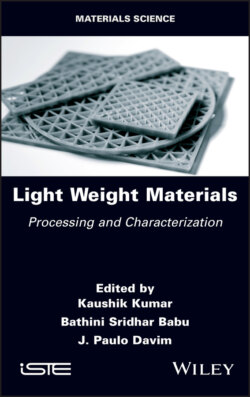Читать книгу Light Weight Materials - Группа авторов - Страница 13
1.1. Introduction
ОглавлениеAdditive manufacturing technology enables a variety of innovative and economically reliable components when compared to conventional manufacturing methods. The term “rapid prototyping” (RP) is defined as the emphasis of generating a design for a prototype or a base model at a faster rate to promote the end product for manufacturing. It is used in various industries to rapidly develop various peripherals with intricate user-defined models into a commercialized product (Devadiga 2017). RP technology emerged as the first methodology for making user-defined models, but it lags behind modern methodology due to its inadequate efficiency to effectively create products within the time limit and cost of production. Additive manufacturing (AM) technology developed from RP technology to enhance the quality of the output product. AM acts as a basic principle of creating three-dimensional (3D) objects generated through computer-aided design (CAD) systems. In AM technology, the components are produced from CAD data and slicing software to create a specified part geometry rather than complex tooling and additional fixtures that are used in conventional manufacturing methodologies. In AM technology, the structures are built in a layer-by-layer fashion with a specified cross-section, which is not only used in manufacturing industries to fabricate automobile components and dynamic mechanical structures but is also used in tissue engineering with the capacity of bioprinting to create biomedical implants, artificial human organs and drug delivery systems (Herzog 2016). AM technology acts as a key to solving environmental and engineering issues since it has free-form fabrication (FFF) that facilitates producing user-defined geometries with all classes of raw materials without any limitations, unlike metals, non-metals, alloys and synthetic polymers, with no wastage of materials. This technology can be further improved by increasing its applications across the engineering industry (Dhinakaran 2019). There are numerous stages involved in product development, initially from generating a CAD model to the conversion of the STL file format to make the end product (DebRoy 2018). As AM is a multi-purpose method, it is used not only for producing new components but also to simplify and alter the existing components.
Figure 1.1. Additive manufacturing process (Tofail 2018). For a color version of this figure, see www.iste.co.uk/kumar/materials.zip
